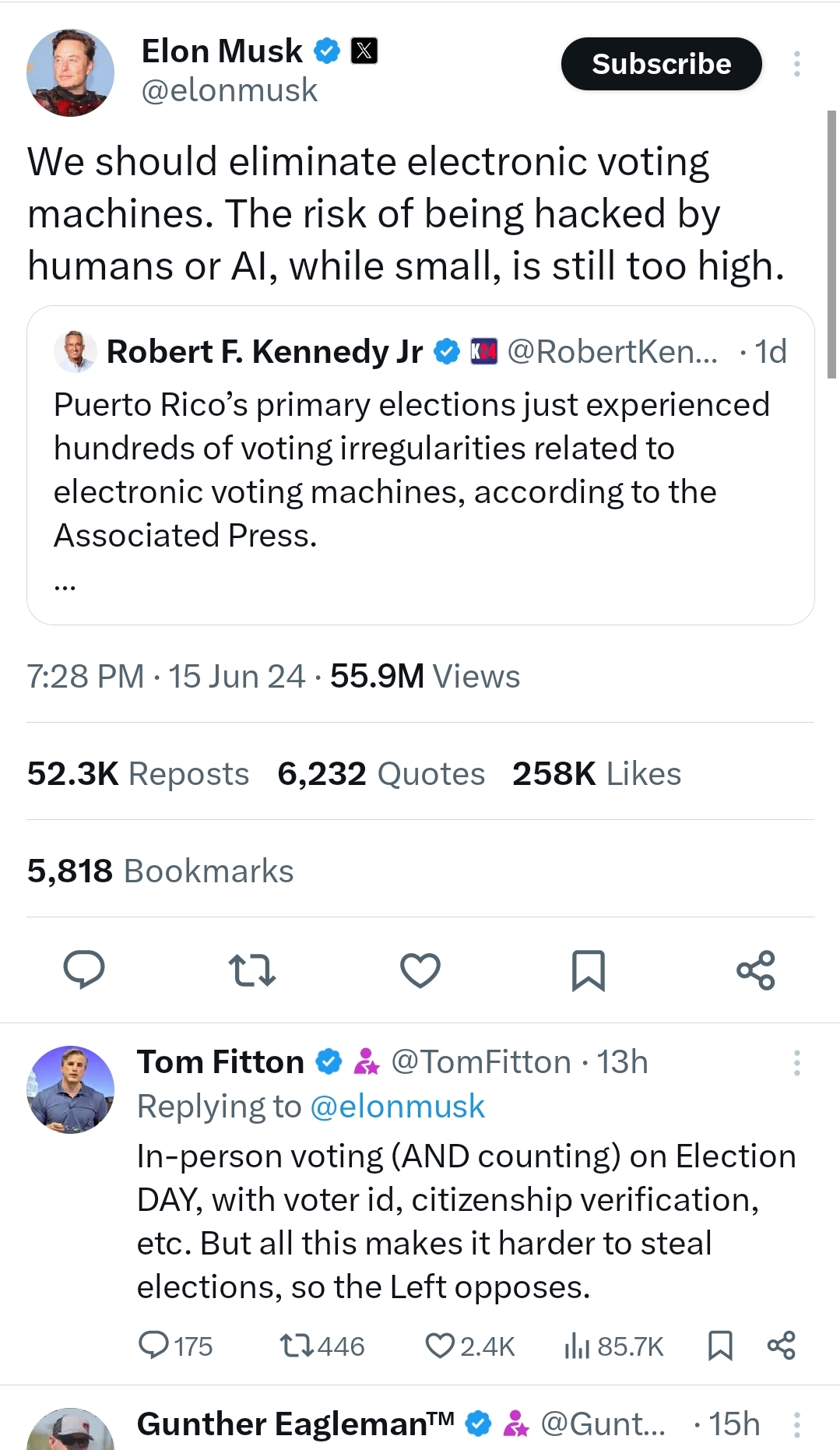this post was submitted on 17 Jun 2024
260 points (86.5% liked)
People Twitter
8858 readers
1205 users here now
People tweeting stuff. We allow tweets from anyone.
RULES:
- Mark NSFW content.
- No doxxing people.
- Must be a pic of the tweet or similar. No direct links to the tweet.
- No bullying or international politcs
- Be excellent to each other.
- Provide an archived link to the tweet (or similar) being shown if it's a major figure or a politician. Archive.is the best way.
founded 2 years ago
MODERATORS
you are viewing a single comment's thread
view the rest of the comments
view the rest of the comments

Counterpoint: There's a big difference between electronic voting machines and electronic counting machines.
The way we do elections in Canada, your vote is made on paper. The paper ballots are fed though electronic counting machines to get the initial tally, but the paper record is then kept and tallied up separately to check for discrepancies. This is both fast and secure.
Electronic voting machines, on the other hand, are an exercise in absolute insanity that security experts universally agree no one should be using.
Of course, Musk is railing against them because he's drunk the far right Kool-Aid about stolen elections, but actual smart, educated people have been saying the same thing for a lot longer.
Good point, thanks!
As long as the hand count is recognized as the actual result i would be fine with that.Knowing humans and our tendency to be lazy, i fear we would first reduce the redundant checks and then skip them completely. In the name of efficiency of course.
Also after witnessing the history of absolute fuckups my government (germany) produced in the field of software and IT, i don’t want them to use machines. They lost any trust i had in them with any kind of technology. Let them count and add up by hand, i’ll gladly pay extra taxes for that.
Maybe i’m just a bit to paranoid :/
That's how it works, yeah. Since there's unlikely to be any issue with the machine count, that works fine for getting results on the day, but ultimately you have the paper record that can be checked by hand, or run through different counting machines, in order to verify if there's any concerns.
In a smaller local election a few cycles back, I got to trial a paper backed electronic voting machine they were testing out for people who have dexterity or vision problems.
You basically got the same paper ballot as everyone else, but then you slipped it into the machine and it colored the bubbles for you after you selected the option on the screen.
Then you took your piece of paper out and handled it like a ballot filled in by hand.
Wasn't networked and didn't see anything that could tie you to a vote.
I got to share my appreciation for the concept, but concern about difficulty verifying it filled things out correctly, and the potential for touch screens to be difficult to use or act funny, all the difficulties of ux work to handle fixing an error, and the need for the UI to be exceptionally clear, which was difficult on the smaller screen with the larger font.
I think it also has screen reader support, but I didn't use it, so I'm not sure.